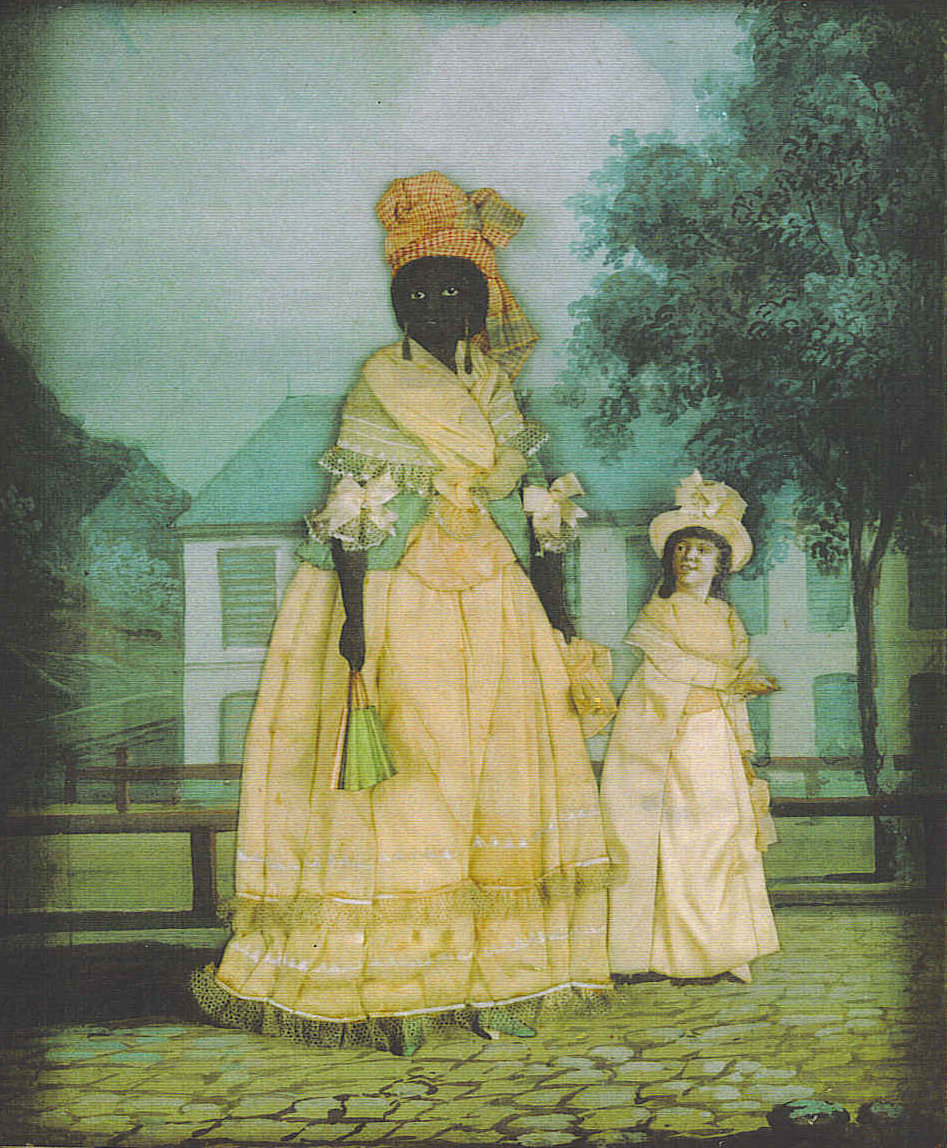|
Whitney Plantation
The Whitney Plantation Historic District is preserved by the Whitney Institute, a non-profit whose mission is to educate the public about the history and legacies of Slavery in the United States, slavery in the Southern United States. The district, including the main house and outbuildings, is preserved near Wallace, Louisiana, Wallace, in St. John the Baptist Parish, Louisiana, St. John the Baptist Parish, Louisiana, on the River Road along the Mississippi River. Habitation Haydel was founded in 1752 by Ambroise Haydel, one of the many German immigrants who colonized the river parishes in the 18th century. His descendants owned it until 1860. In 1867 it was sold to businessman Bradish Johnson who renamed it Whitney. Overview The plantation was a 1,800-acre property. Today, 200 acres are occupied by the museum which opened to the public for the first time in December 2014. (The remaining acreage was sold off by the previous owners in the 1970s.) The museum was founded by John Cum ... [...More Info...] [...Related Items...] OR: [Wikipedia] [Google] [Baidu] |
Wallace, Louisiana
Wallace is a census-designated place (CDP) in St. John the Baptist Parish, Louisiana, United States. The population was 570 at the 2000 census. It is part of the New Orleans– Metairie–Kenner Metropolitan Statistical Area. The rural community is on the west bank of the Mississippi River and easily accessible to Interstate 10 via the Gramercy Bridge. It is the site of Evergreen Plantation, designated a National Historic Landmark in 1992. Evergreen is unusual for having 22 surviving slave quarters buildings. It is one of the most complete plantations in the South. Because of its significance, it was selected as one of the sites on the Louisiana African American Heritage Trail. The Whitney Plantation is also located here. Also a designated site on the state heritage trail, this historic complex opened to the public in 2014. It is the first plantation museum in the country dedicated to the slave experience. The museum includes a plantation main house, and relocated chur ... [...More Info...] [...Related Items...] OR: [Wikipedia] [Google] [Baidu] |
Sugarcane
Sugarcane or sugar cane is a species of (often hybrid) tall, perennial grass (in the genus '' Saccharum'', tribe Andropogoneae) that is used for sugar production. The plants are 2–6 m (6–20 ft) tall with stout, jointed, fibrous stalks that are rich in sucrose, which accumulates in the stalk internodes. Sugarcanes belong to the grass family, Poaceae, an economically important flowering plant family that includes maize, wheat, rice, and sorghum, and many forage crops. It is native to the warm temperate and tropical regions of India, Southeast Asia, and New Guinea. The plant is also grown for biofuel production, especially in Brazil, as the canes can be used directly to produce ethyl alcohol (ethanol). Grown in tropical and subtropical regions, sugarcane is the world's largest crop by production quantity, totaling 1.9 billion tonnes in 2020, with Brazil accounting for 40% of the world total. Sugarcane accounts for 79% of sugar produced globally (most of the re ... [...More Info...] [...Related Items...] OR: [Wikipedia] [Google] [Baidu] |
CBS This Morning
''CBS This Morning'' (''CTM'') is an American morning television program that aired on CBS from November 30, 1987, to October 29, 1999, and again from January 9, 2012, to September 6, 2021. The program was aired from Monday through Saturday. It aired live from 7:00 a.m. to 9:00 a.m. in the Eastern Time Zone. On weekdays, it aired on a tape-delay in the Central and Mountain Time Zones; stations in the Pacific, Alaska and Hawaii Time Zones received an updated feed with a specialized opening and updated live reports. Stations outside the Eastern Time Zone carried the Saturday broadcast at varied times. It was the tenth distinct morning news-features program format that CBS has aired since 1954, having replaced ''The Early Show'' on January 9, 2012. The program emphasized general national and international news stories and in-depth reports throughout each edition, although it also included live in-studio and pre-taped interviews. The format was chosen as an alternat ... [...More Info...] [...Related Items...] OR: [Wikipedia] [Google] [Baidu] |
List Of Plantations In Louisiana
A ''list'' is any set of items in a row. List or lists may also refer to: People * List (surname) Organizations * List College, an undergraduate division of the Jewish Theological Seminary of America * SC Germania List, German rugby union club Other uses * Angle of list, the leaning to either port or starboard of a ship * List (information), an ordered collection of pieces of information ** List (abstract data type), a method to organize data in computer science * List on Sylt, previously called List, the northernmost village in Germany, on the island of Sylt * ''List'', an alternative term for ''roll'' in flight dynamics * To ''list'' a building, etc., in the UK it means to designate it a listed building that may not be altered without permission * Lists (jousting), the barriers used to designate the tournament area where medieval knights jousted * ''The Book of Lists'', an American series of books with unusual lists See also * The List (other) * Listing (di ... [...More Info...] [...Related Items...] OR: [Wikipedia] [Google] [Baidu] |
History Of Slavery In Louisiana
Following Robert Cavelier de La Salle establishing the French claim to the territory and the introduction of the name ''Louisiana'', the first settlements in the southernmost portion of Louisiana (New France) were developed at present-day Biloxi (1699), Mobile (1702), Natchitoches (1714), and New Orleans (1718). Slavery was then established by European colonists. The institution was maintained by the Spanish (1763–1800) when the area was part of New Spain, by the French when they briefly reacquired the colony (1800–1803), and by the United States following the Louisiana Purchase of 1803. Due to its complex history, Louisiana had a very different pattern of slavery compared to the rest of the United States. French rule (1699–1763) Slavery was introduced by French colonists in Louisiana in 1706, when they made raids on the Chitimacha settlements. Thousands of indigenous people were killed, and the surviving women and children were taken as slaves. The enslavement of n ... [...More Info...] [...Related Items...] OR: [Wikipedia] [Google] [Baidu] |
Rural African American Museum
Rural African American Museum is a museum in Opelousas that focuses on the history of African Americans living in St. Landry Parish, Louisiana, United States, from the American Civil War to the present. It was inaugurated in late 2018 and is free to tour, although its operations rely primarily on donations. The museum's creator and president is Wilken Jones, a retired social studies school teacher who grew up in the nearby town of Plaisance. The permanent exposition showcases books, objects and press clippings that pertain to the economic, religious and political history of the region. The items on display include antique bedroom furniture, kitchen utensils and farm tools, among other things. The exposition illustrates the conditions of life of many Black sharecroppers in the late 19th and early 20th century. In July 2019, the museum offered a summer camp program to accommodate children affected by the destruction of their churches, following the burning of three Black Baptist c ... [...More Info...] [...Related Items...] OR: [Wikipedia] [Google] [Baidu] |
Plantation Complexes In The Southern United States
A plantation complex in the Southern United States is the built environment (or complex) that was common on agricultural plantations in the American South from the 17th into the 20th century. The complex included everything from the main residence down to the pens for livestock. Until the abolition of slavery, such plantations were generally self-sufficient settlements that relied on the forced labor of enslaved people. Plantations are an important aspect of the history of the Southern United States, particularly the antebellum era (pre-American Civil War). The mild temperate climate, plentiful rainfall, and fertile soils of the southeastern United States allowed the flourishing of large plantations, where large numbers of enslaved Africans or African Americans were held captive and forced to produce crops to create wealth for a white elite. Today, as was also true in the past, there is a wide range of opinion as to what differentiated a plantation from a farm. Typically ... [...More Info...] [...Related Items...] OR: [Wikipedia] [Google] [Baidu] |
National Register Of Historic Places Listings In St
National may refer to: Common uses * Nation or country ** Nationality – a ''national'' is a person who is subject to a nation, regardless of whether the person has full rights as a citizen Places in the United States * National, Maryland, census-designated place * National, Nevada, ghost town * National, Utah, ghost town * National, West Virginia, unincorporated community Commerce * National (brand), a brand name of electronic goods from Panasonic * National Benzole (or simply known as National), former petrol station chain in the UK, merged with BP * National Car Rental, an American rental car company * National Energy Systems, a former name of Eco Marine Power * National Entertainment Commission, a former name of the Media Rating Council * National Motor Vehicle Company, Indianapolis, Indiana, USA 1900-1924 * National Supermarkets, a defunct American grocery store chain * National String Instrument Corporation, a guitar company formed to manufacture the first re ... [...More Info...] [...Related Items...] OR: [Wikipedia] [Google] [Baidu] |
Evergreen Plantation (Wallace, Louisiana)
Evergreen Plantation is a plantation located on the west side of the Mississippi River in St. John the Baptist Parish, near Wallace, Louisiana, and along Louisiana Highway 18. The main house was constructed mostly in 1790, and renovated to its current Greek Revival style in 1832. The plantation's historical commodity crop was sugarcane, cultivated by enslaved African Americans until emancipation. The plantation operated until about 1930, when the Depression resulted in the owners abandoning the house. The plantation continued to produce sugar cane under the direction of the bank that owned it, and it is still a working sugar cane plantation today. The house was extensively restored during the 1940s, with 300,000 bricks from the demolished Uncle Sam Plantation used in the restoration. Description The plantation includes 37 contributing buildings, all but eight of them antebellum, making it one of the most complete plantation complexes in the state and the South. Of grea ... [...More Info...] [...Related Items...] OR: [Wikipedia] [Google] [Baidu] |
The Atlantic
''The Atlantic'' is an American magazine and multi-platform publisher. It features articles in the fields of politics, foreign affairs, business and the economy, culture and the arts, technology, and science. It was founded in 1857 in Boston, as ''The Atlantic Monthly'', a literary and cultural magazine that published leading writers' commentary on education, the abolition of slavery, and other major political issues of that time. Its founders included Francis H. Underwood and prominent writers Ralph Waldo Emerson, Oliver Wendell Holmes Sr., Henry Wadsworth Longfellow, Harriet Beecher Stowe, and John Greenleaf Whittier. James Russell Lowell was its first editor. In addition, ''The Atlantic Monthly Almanac'' was an annual almanac published for ''Atlantic Monthly'' readers during the 19th and 20th centuries. A change of name was not officially announced when the format first changed from a strict monthly (appearing 12 times a year) to a slightly lower frequency. It was a ... [...More Info...] [...Related Items...] OR: [Wikipedia] [Google] [Baidu] |
Django Unchained
''Django Unchained'' () is a 2012 American revisionist Western film written and directed by Quentin Tarantino, starring Jamie Foxx, Christoph Waltz, Leonardo DiCaprio, Kerry Washington, and Samuel L. Jackson, with Walton Goggins, Dennis Christopher, James Remar, Michael Parks, and Don Johnson in supporting roles. Set in the Old West and Antebellum South, it is a highly stylized, heavily revisionist tribute to Spaghetti Westerns, in particular the 1966 Italian film '' Django'' by Sergio Corbucci (the star of which, Franco Nero, has a cameo appearance). The story follows a black slave who trains under a German bounty hunter, with the ultimate goal of reuniting with his long-lost wife. Development of ''Django Unchained'' began in 2007 when Tarantino was writing a book on Corbucci. By April 2011, Tarantino sent his final draft of the script to The Weinstein Company. Casting began in the summer of 2011, with Michael K. Williams and Will Smith being considered for the role ... [...More Info...] [...Related Items...] OR: [Wikipedia] [Google] [Baidu] |
Quentin Tarantino
Quentin Jerome Tarantino (; born March 27, 1963) is an American film director, writer, producer, and actor. His films are characterized by stylized violence, extended dialogue, profanity, dark humor, non-linear storylines, cameos, ensemble casts, and references to popular culture. Other directorial tropes associated with Tarantino include the use of songs from the 1960s and 70s, fictional brand parodies, and the prominent framing of women's bare feet. Tarantino began his career as an independent filmmaker with the release of the crime film '' Reservoir Dogs'' in 1992. His second film, '' Pulp Fiction'' (1994), a dark comedy crime thriller, was a major success with critics and audiences winning numerous awards, including the Palme d'Or and the Academy Award for Best Original Screenplay. In 1996, he appeared in ''From Dusk till Dawn'', also writing the screenplay. Tarantino's third film, '' Jackie Brown'' (1997), paid homage to blaxploitation films. In 2003, Tarantino ... [...More Info...] [...Related Items...] OR: [Wikipedia] [Google] [Baidu] |


.jpg)





